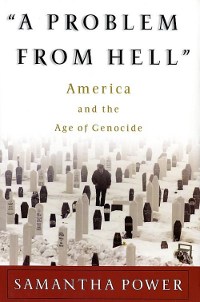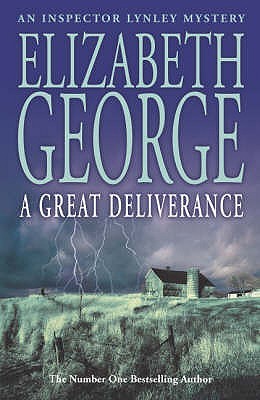 I hate overly preachy or overly fawning accounts in the name of non fiction. I mean books like Beyond the Last Blue Mountain or, perhaps surprisingly for you, The Life of Pi. From the book’s title and the subject matter, I feared that this is perhaps one in the latter category. Thankfully, this is not the case.
I hate overly preachy or overly fawning accounts in the name of non fiction. I mean books like Beyond the Last Blue Mountain or, perhaps surprisingly for you, The Life of Pi. From the book’s title and the subject matter, I feared that this is perhaps one in the latter category. Thankfully, this is not the case.
The full title of this book is : A Problem From Hell : America and the Age of Genocide. Sounds like a literature Ph D thesis and I would have not touched the book with a ten foot pole if it had not come with high recommendations. As it is, I am glad I did. It is a well written and gripping book and the author’s passion for the oppressed comes out as is her frustration and anger at successive US bungling of each crisis.
The book covers a broad canvas. Covers all mass killings, effortlessly moving from the Armenian genocide by Turkey to Pol Pot massacres to Nazi Germany and Iraq’s attempts at the eradication of their Kurd population.
An Armenian kills Kamal Pasha, who is living in retirement in Germany for all the atrocities the latter committed against Armenians when he was a Turkish general in the Ottoman army.
Tehrlian, the assassin, in his young days saw his whole family raped, tortured and killed by the Turkish soldiers who were accompanying them in a forced march “in order to protect them”. He himself was left for dead after a hit on his head knocked him unconscious.
The massacre is not condemned by Germany, which is an ally of Turkey against the Allies in World War I but the Allies themselves are too busy to win the war to make a big protest.
The valiant efforts of Morgenthau, the US ambassador to get US to intervene is of no avail. He asks for a transfer in disgust and is never appointed again as an ambassador by an irate President Wilson.
Samantha writes passionately and very well, keeping what is a rather difficult subject well.
Another advocate for stopping extermination of a whole ethnicity (the term ‘genocide’ was not used then) was a Polish lawyer called Lemkin. He tried to propose, in UN, that this should be made illegal, and even specifically talked about dangers such as the (future) rise of a ruler like Hitler in Germany. The motion was defeated and the UN panel said that there was no conceivable way anything like the Armenian massacre “can happen again”. Remember that Lemkin was a Polish Jew and that the year was 1939 and the irony is supreme!
Lemkin tries to persuade the Jews to leave as soon as Germany invades Poland but no one, not even his family, wants to leave the place where they have ‘everything’. Tragic. He immigrates to the US and his efforts to bring the plight of Jews under Hitler also fall on deaf ears. He coins the word genocide to denote attempts to exterminate a whole people.
Zygielbojm was so frustrated with the lack of attention to the Jewish plight and the indecision of the Allied powers that he killed himself to bring their plight to the world’s attention.
Lemkin makes himself a pest making people run the other way when they see him but succeeds in getting genocide outlawed by a UN charter. US turns against the vague wording of the act and refuses to ratify it. Lemkin goes nearly nuts and complains against Human Rights Act of UN! He dies a weird man to the last.
Proxmire takes up the cudgels for genocide law afterwards.
The author complains that during Khmer Rouge atrocities US did not step in and do something. I agree that a nation’s rulers should not be allowed to murder their own population or part thereof with impunity but think about it. US was just walloped in Vietnam and evacuated Combodia and were war weary. To go back in again against Khmer Rouge would not have been easy as they needed Congress approval to do that and the whole country was up against foreign adventurism due to the Vietnam war effect. Rather like the post Iraq fatigue of US in Syria, for example. The debate then (as it is now in the Middle East) is whether the suffering of a citizenry justifies a foreign power to intervene against the government’s will.
Excellent coverage is provided of the reasons of the Pol Pot takeover of Cambodia, including the corrupt administration of Prince Sihanouk, the womanizing gourmet who called himself god king or ‘deva raj’ (Interesting use of Sanskrit there, of all things).
Nixon administrations to install the totally ineffective regime of Lon Nol as the prime minister, in a coup and the author describes how it exacerbated the problem and how his army was not even furnished and how US gave 80% of the revenues in aid which went straight to the pockets of the ruling politicians. Fascinating. It is ironic how Sihanouk became the front for the Pol Pot regime when they won the civil war. The subsequent brutality was covered much more graphically in the other book we reviewed earlier – Pol Pot: A History of Nightmare by Philip Short which gave the inside view. But this one is a good outsider’s summary.
The Cambodian story from the perspective of US and world inaction in the face of mass atrocities by Pol Pot regime is also beautifully told. The struggles of lone Senators to get the Carter administration or the UN to do something substantial without much to show for it is also heart rending.
Due to cold war considerations, it is appalling to see US side with the ousted Khmer Rouge government even after the genocide is well known and not only get them a seat in the UN but also supply arms for it to recapture Cambodia from Vietnam? All because Vietnam was aligned with Russia and US was trying to curry favour with China, a Khmer supporter? It is terrible to read!
What a powerful indictment on the US policy! First, unreasonable reluctance to even acknowledge Hitler’s mass executions, then support for Cambodian regime (even aid and arms after they were ousted) to unseat Vietnam which had finally “liberated” the place, then overt support and blind denials of Saddam’s employment of chemical weapons against his own population of Kurds. When you read the stubborn refusal of US government to recognize overwhelming evidence from its own senators and journalists for the sake of geopolitics, you are truly horrified.
Samantha then turns her razor sharp analysis to the Bosnian problem. Clinton the Presidential Candidate is full of passion and outrage for the Bosnians but Clinton the President turns out to be a totally different one, not taking any action at all while Bosnians are massacred with seeming impunity by the Miloslavic regime. Ironic that an author vilified as a war monger ended up in the advisory council of one of the tamest Presidents of them all, Obama.
Rwandan massacres come in next and her explanation of the riot in personal terms of what individual groups did makes, again, for a powerful description of the madness that prevailed. The chilling “instructions” given to Hutus is terribly stark.
Samantha covers the Bosnian and Kosovo crises too, in a similar vein.
The last portion of the book is a rehash mostly. There are some moving vignettes. This focuses on the remedial measures taken and compares the Human Rights commissions set up in various countries (Cambodia, Rwanda with the International Court of Justice). You can safely skip most of this without any loss of information.
In all, a great book, better than I anticipated. 7/10
– – Krishna
 Science books are getting better all the time. There are many authors who write exasperatingly well about science, and Simon Singh is also one of them. Some of the others we have reviewed already are
Science books are getting better all the time. There are many authors who write exasperatingly well about science, and Simon Singh is also one of them. Some of the others we have reviewed already are  An American author writing in a British setting in itself is unusual.
An American author writing in a British setting in itself is unusual.